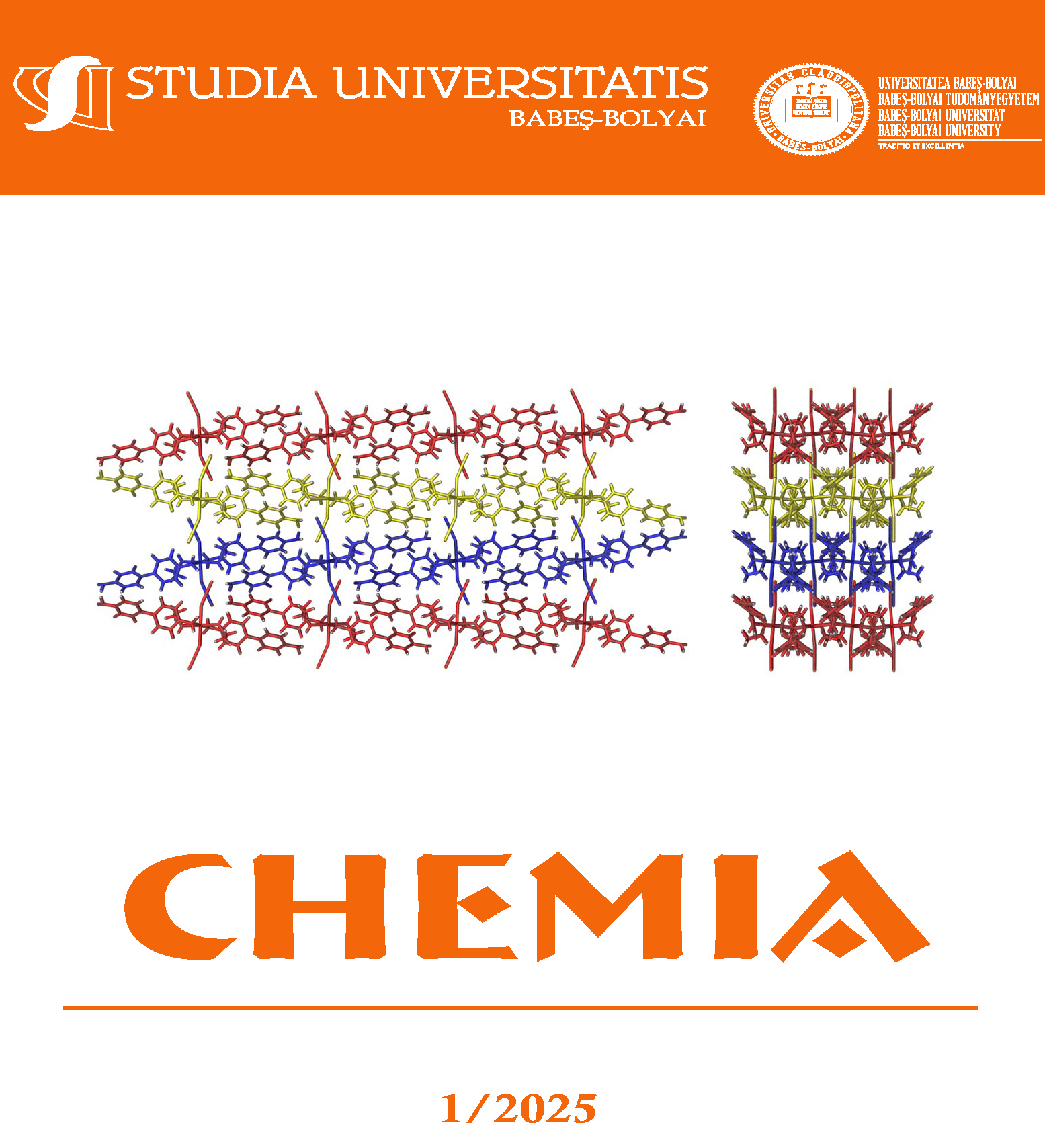ASSESSMENT OF GREENHOUSE GAS (GHG) EMISSIONS ASSOCIATED WITH RAPESEED FARMING IN ROMANIA
DOI:
https://doi.org/10.24193/subbchem.2025.1.09Keywords:
greenhouse gas emissions, GHG, rapeseed farming, nitrogen fertilization, biofuels, sustainable agricultureAbstract
Agriculture plays a role in greenhouse gas (GHG) emissions, especially by cultivating biofuel crops like rapeseed (Brassica napus). This study assesses the GHG emissions associated with rapeseed farming in Romania, focusing on 2022–2024. Data were collected from rapeseed cultivation at Mihai Viteazu, Cluj, under various fertilization and irrigation conditions. The study reveals that GHG emissions range from 89 to 231 kg CO2 eq/l biodiesel, with irrigation reducing emissions by approximately 1.3 times compared to non-irrigated conditions. Notably, nitrogen fertilization significantly increases nitrous oxide (NOx) emissions, which account for 80% of total GHG emissions, particularly under higher nitrogen application rates. The results highlight the need for optimized nitrogen management to balance yield increases with environmental impacts, as excessive nitrogen use intensifies NOx emissions due to enhanced nitrification and denitrification processes. The study also finds that irrigation mitigates GHG and NOx emissions, emphasizing its role in sustainable rapeseed farming. This research underscores the importance of precision nitrogen management and irrigation in reducing the carbon footprint of rapeseed biodiesel production while enhancing crop productivity in Romania.
References
1. J. Smith, A. Brown, Agriculture and Environmental Sustainability, 2020, 1-8.
2. R. Johnson, P. Silva, Renewable Energy Systems, 2019, 10-15.
3. R. C. Buturca, C. Gasol, D. Scarpete, X. Gabarrell, International Journal of Environmental and Ecological Engineering, 2013, 7(9), 644-648.
4. M. Popescu, L. Mihai, Journal of Agricultural Sciences, 2021, 22-29.
5. C. Dragomir, E. Stoica, Sustainable Agriculture Practices, 2022, 33-40.
6. T. Carter, A. Evans, Climate Change Mitigation in Agriculture, 2018, 44-51.
7. V. C. Tudor, T. A. Dinu, M. Vladu, D. Smedescu, I. M. Vlad, E. A. Dumitru, C. L. Costuleanu, Labour implications on agricultural production in Romania. Sustainability,2022 14(14), 8549.
8. S. Marin, O. Toma, Journal of Climate Smart Agriculture, 2023, 55-63.
9. D. Ionescu, M. Radulescu, Biofuels and Sustainable Energy, 2020, 64-70.
10. P. George, H. Lee, Environmental Impact Assessment in Agriculture, 2019, 71-78.
11. K. Thompson, J. Green, Renewable and Sustainable Energy Reviews, 2021, 79-87.
12. L. Zhang, M. Wang, Precision Agriculture Innovations, 2017, 88-95.
13. R. Fischer, T. Weber, European Agricultural Sustainability, 2016, 96-102.
14. B. Petrescu, I. Cazacu, Irrigation and Agricultural Emissions, 2022, 103-110.
15. F. Dumitrescu, A. Lupescu, Soil and Crop Science, 2018, 111-119.
16. V. Popa, E. Stefan, Agricultural Economics and Environment, 2020, 120-126.
17. J. McDonald, K. Roberts, European Environmental Policy, 2015, 127-134.
18. C. Stan, R. Iliescu, Sustainability in Agriculture, 2023, 135-142.
19. D. Carter, P. Singh, Bioenergy Research, 2020, 143-151.
20. F. Rossi, G. Marchetti, Journal of Environmental Protection, 2019, 152-159.
21. A. Kovacs, M. Horvath, Journal of Climate Change and Agriculture, 2021, 160-167.
22. T. Ivanov, S. Georgiev, Agricultural Science and Technology, 2019, 168-175.
23. *** DIRECTIVE 2009/28/EC OF THE EUROPEAN PARLIAMENT AND OF THE COUNCIL of 23 April 2009 on the promotion of the use of energy from renewable sources and amending and subsequently repealing Directives 2001/77/EC and 2003/30/EC
24. N. Lange, D. Moosmann, S. Majer, K. Meisel, K. Oehmichen, S. Rauh, D. Thrän, In Progress in Life Cycle Assessment, 2023, 85-101.
25. H. Thers, M.T. Knudsen, P.E. Lærke, Heliyon, 2023, 9.6.
26. X. Boton, L. Nitschelm, M. Juillard, H.M. Van der Werf, The International Journal of Life Cycle Assessment, 2024, 1-16.
27. H.S. Eggleston, et al. "IPCC guidelines for national greenhouse gas inventories. Volume 4: Agriculture, Forestry and Other Land Use." Institute for Global Environmental Strategies: Hayama, Japan 4, 2006.
Downloads
Published
How to Cite
Issue
Section
License
Copyright (c) 2025 Studia Universitatis Babeș-Bolyai Chemia

This work is licensed under a Creative Commons Attribution-NonCommercial-NoDerivatives 4.0 International License.



